Article by Amanda Koss, UConn Dietetics Student
As you make your way through the grocery store, you will find food packages labeled with terms and dates like these: “sell by”, “use by”, and “best if used by.” It can be confusing to know what each one means, but not impossible! Understanding these dates on packages can help you to buy and eat safe, high quality food. The dates can also help you safely store your favorite pantry staples.
Let’s make some sense of these food package terms:
SELL BY:
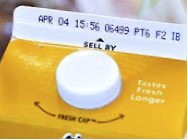 The “sell by” date tells the store the last date the product can be sold. You should aim to buy the product before this date. Once home, this date does not apply once you open the food package or if it’s stored improperly. If the date expires during home storage—by a day or two— a product that requires refrigeration should be safe and of good quality if handled properly and kept at 40°F or below. However, aim to cook or freeze the product according to the times on the USDA storage chart (see below).
The “sell by” date tells the store the last date the product can be sold. You should aim to buy the product before this date. Once home, this date does not apply once you open the food package or if it’s stored improperly. If the date expires during home storage—by a day or two— a product that requires refrigeration should be safe and of good quality if handled properly and kept at 40°F or below. However, aim to cook or freeze the product according to the times on the USDA storage chart (see below).
USE BY:
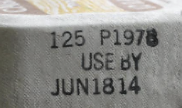 The “use by” date is the last date recommended by the food company for use of the product while at its best quality. Use this date as a guide for the expiration of a product. For example, use eggs within 3 to 5 weeks of the date you buy them for best quality. The “use by” date of the eggs will usually expire during that length of time, but the eggs are perfectly safe to use if they’ve been refrigerated.
The “use by” date is the last date recommended by the food company for use of the product while at its best quality. Use this date as a guide for the expiration of a product. For example, use eggs within 3 to 5 weeks of the date you buy them for best quality. The “use by” date of the eggs will usually expire during that length of time, but the eggs are perfectly safe to use if they’ve been refrigerated.
BEST IF USED BY:
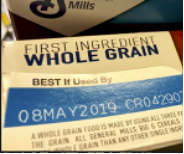 The “best if used by” date is recommended by the food company for best flavor or quality. It is not a purchase or safety date. However, foods can develop an off-odor, flavor or appearance due to bacteria that can cause spoilage. If you find a food has developed these characteristics, it is recommended that you discard the food for quality reasons. If foods are mishandled, bacteria can grow and cause foodborne illness – before or after the date on the package. A good rule of thumb: IF IN DOUBT; THROW IT OUT! In addition, most shelf-stable foods, such as cereal boxes for example, have “best if used by” dates. They are probably okay a few months past the “best by date” if not opened, but if the box is dated 2017, for example, it is time to toss it.
The “best if used by” date is recommended by the food company for best flavor or quality. It is not a purchase or safety date. However, foods can develop an off-odor, flavor or appearance due to bacteria that can cause spoilage. If you find a food has developed these characteristics, it is recommended that you discard the food for quality reasons. If foods are mishandled, bacteria can grow and cause foodborne illness – before or after the date on the package. A good rule of thumb: IF IN DOUBT; THROW IT OUT! In addition, most shelf-stable foods, such as cereal boxes for example, have “best if used by” dates. They are probably okay a few months past the “best by date” if not opened, but if the box is dated 2017, for example, it is time to toss it.
Food Storage:
The dates on these food products refer to food quality, rather than food safety. The next step is how to properly store food in order to maintain top quality. It is important to follow these tips for the best results:
- Purchase the product well before the date shown on the food package.
- If a food requires refrigeration (ex: dairy, meats, fish) take the food home immediately after purchase and refrigerate it right away. Freeze the food if you cannot use it within times recommended on the charts below. If you have any questions or concerns about food safety regarding food items, feel free to call the USDA Meat and Poultry hotline at 1-888-674-6854.
- Once a perishable product is frozen, it does not matter if the date on the package is expired because foods kept continuously frozen are safe indefinitely. It is important to wash your hands during, and after preparing frozen foods to prevent cross-contamination.
- Shelf-stable foods like dry pastas and canned fish like tuna, if handled properly, are good for 2-5 years .
- Use the following storage charts for your handy reference.
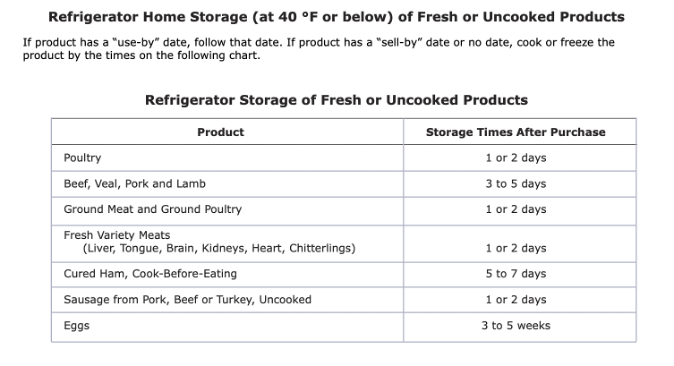
www.usda.gov
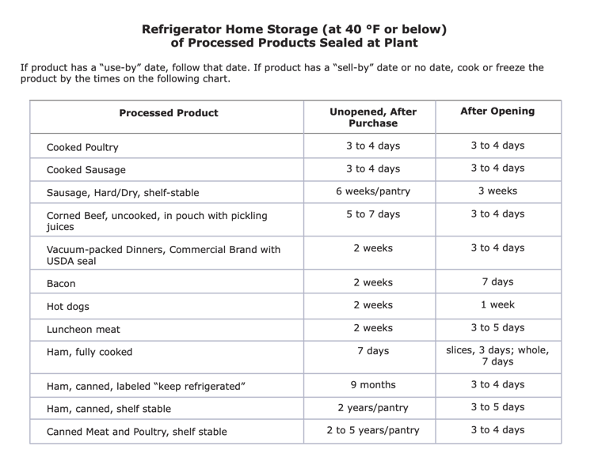
www.usda.gov
This material was funded by USDA’s Supplemental Nutrition Assistance Program (SNAP).
This institution is an equal opportunity employer.